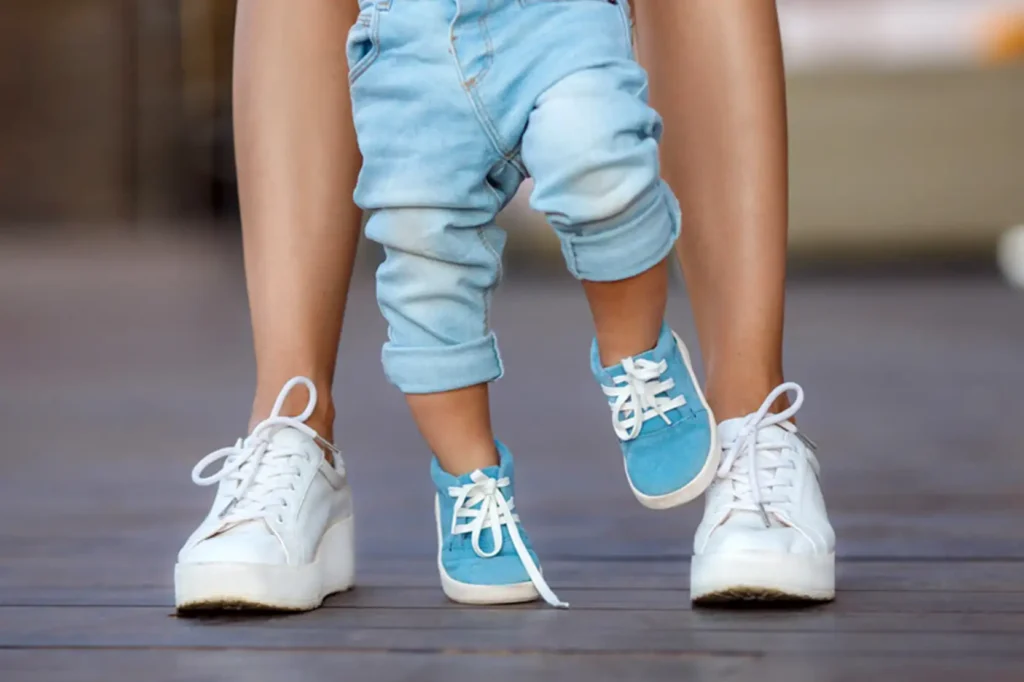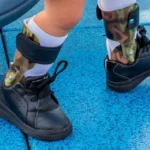Looking for a smart way to fix kids insoles for shoes too big? High-quality kids insoles provide the support, snugness, and safety your child needs for growing feet.
Introduction to Kids Insoles for Shoes Too Big:
Finding the right shoes for kids can be tricky especially when their feet are growing faster than you can keep up! Many parents intentionally buy shoes a little larger to allow room for growth, but this can lead to a common issue: the shoes are just too big right now. This not only affects comfort but can also lead to poor posture, tripping, and even foot pain. That’s where kids insoles for shoes that are too big come in as a safe, practical solution.
As a parent who’s been through this several times, I can tell you that using insoles isn’t just a quick fix it’s a smart way to support your child’s foot health without constantly replacing shoes. With the right insole, your child can wear slightly larger shoes while maintaining proper support, balance, and comfort. This guide will walk you through everything you need to know, from how to choose the right insole to the benefits and potential risks.
Yes, as long as they’re high-quality and well-fitted, kids can wear insoles daily without problems.
Why Kids Wear Shoes That Are Too Big:
It’s incredibly common for parents to buy bigger shoes for kids. After all, children’s feet grow so fast it seems like they outgrow a new pair in just months. Many parents think buying bigger shoes saves money, and that’s true to some extent but only when it’s done safely.
The problem starts when shoes are too big. Oversized shoes can cause the foot to slide, the toes to curl unnaturally, or the heel to lift during walking. These movements can lead to discomfort, calluses, balance issues, or worse injuries from tripping. That’s why it’s crucial to address the issue with proper support, like high-quality insoles designed for kids.

How Insoles Help Fix Oversized Shoes:
Insoles are a practical and safe solution for making slightly oversized shoes fit snugly. They fill the extra space in the shoe and help the foot stay properly positioned. For children, this is especially important because their growing feet need support to develop correctly.
The right insole adds cushioning under the foot, reducing the risk of blisters and foot fatigue. It also helps align the foot better inside the shoe, which improves walking posture and reduces heel slippage. Some insoles even have arch support, which can be essential for preventing long-term foot problems in active kids.
Types of Kids Insoles for Bigger Shoes:
Not all insoles are made the same, and it’s important to choose one that matches your child’s needs. Here are the most common types used for oversized shoes. Choose an insole based on where the extra space is and how the shoe fits overall. A heel liner may be enough if the heel slips, but if the whole shoe feels big, go for a full insole.
More Read
- Full-length cushioned insoles: These fill the entire shoe and are best for adding overall comfort and snugness.
- Heel grips or heel liners: Perfect for when only the heel area is too loose.
- Arch support insoles: Ideal for children with flat feet or high arches to support healthy growth.
How to Properly Fit an Insole in Kids’ Shoes:
Fitting an insole might seem simple, but doing it right makes all the difference. Start by removing the existing insole (if the shoe has one). Then insert the new insole and make sure it lays flat without bunching or folding. Some insoles may need trimming to fit the shoe perfectly always follow the manufacturer’s guidelines.
Once in place, have your child walk around to see how the shoes feel. The foot should not slide forward or back, and the heel should stay in place. A properly fitted insole should instantly improve the fit and comfort of the shoe.
When to Replace Kids Insoles:
Just like shoes, insoles wear out over time. Check them regularly for signs of wear, especially if your child complains about discomfort. On average, replace insoles every 3–6 months depending on usage.
Also, keep in mind your child’s feet may grow during that time, which could require both a new insole and a new pair of shoes. Don’t try to make overly large shoes fit for too long safety and comfort should always come first.
Are Insoles Safe for Growing Feet:
Yes, high-quality insoles made for children are completely safe for growing feet. In fact, they can enhance foot development by providing extra cushioning, better alignment, and arch support if needed.
However, it’s important to avoid cheap foam inserts that offer no structure. Go for orthopedic or pediatric-recommended brands that are known for quality. If your child has specific foot conditions (like flat feet or overpronation), consult a pediatric podiatrist for guidance.
Quick Alternatives to Insoles for Loose Shoes:
While insoles are the best solution, there are other quick fixes you can try. Still, for long-term wear and support, nothing beats a well-fitted insole.
- Thicker socks: Add bulk inside the shoe but may not be comfortable in warmer weather.
- Tongue pads: These stick inside the tongue of the shoe and push the foot back into place.
- Elastic laces or shoe adjusters: Help tighten the fit without needing to buy new shoes.
FAQ
Most frequent questions and answers
Yes, as long as they’re high-quality and well-fitted, kids can wear insoles daily without problems.
Insoles can fix shoes that are half to one full size too big. If the shoes are more than that, it’s better to buy a better-fitting pair.
Absolutely. They reduce foot movement inside the shoe, which cuts down on rubbing and prevents blisters.
Conclusion:
They help fill extra space, prevent slipping, and provide much-needed comfort for growing feet. In conclusion, kids insoles for shoes too big are a smart, affordable solution for ensuring a proper fit and supporting healthy foot development. Whether your child’s shoes are just slightly oversized or you want to extend their use safely, the right insole makes all the difference. Always choose high-quality, well-fitted insoles to keep your child comfortable, confident, and protected with every step.





